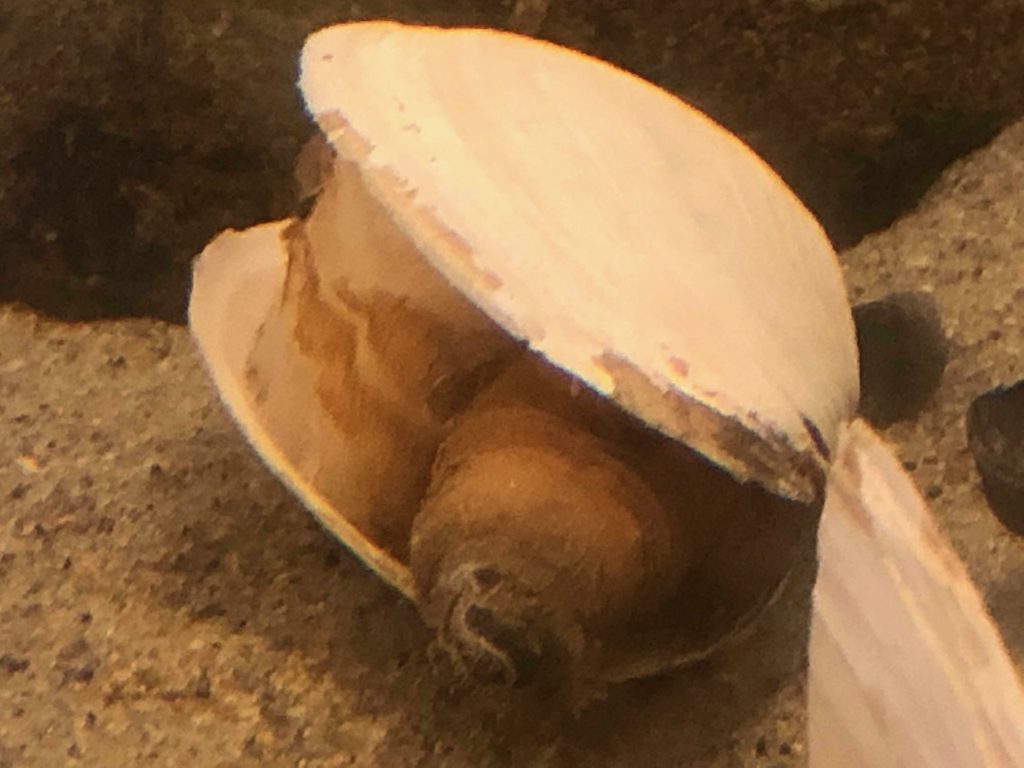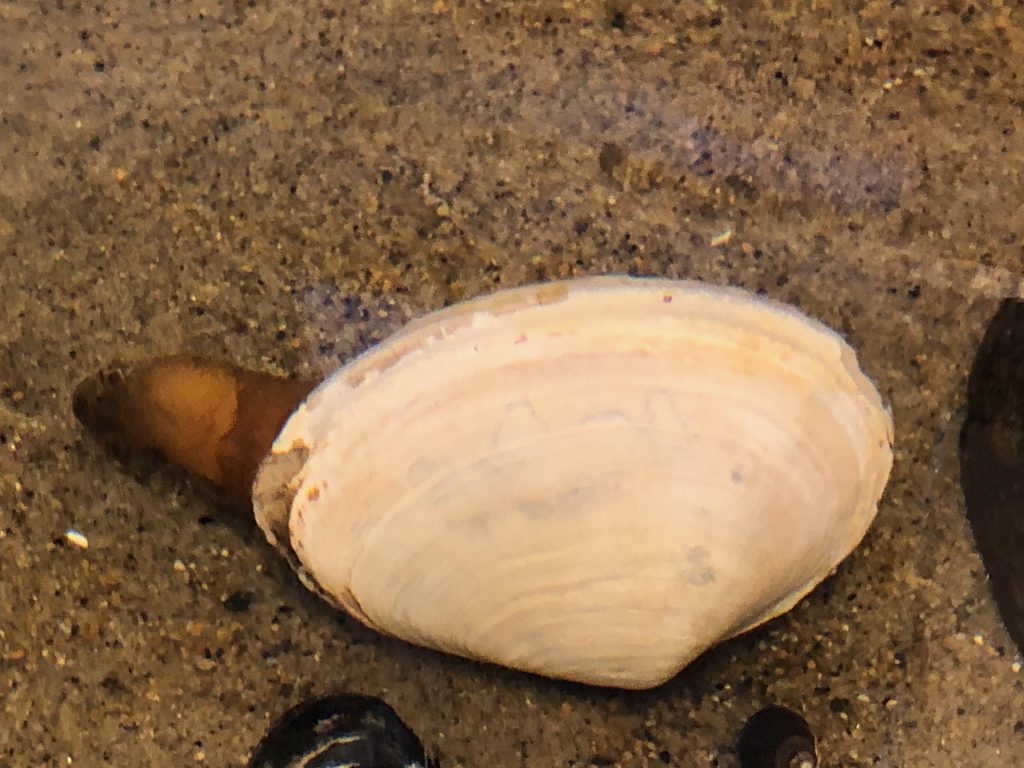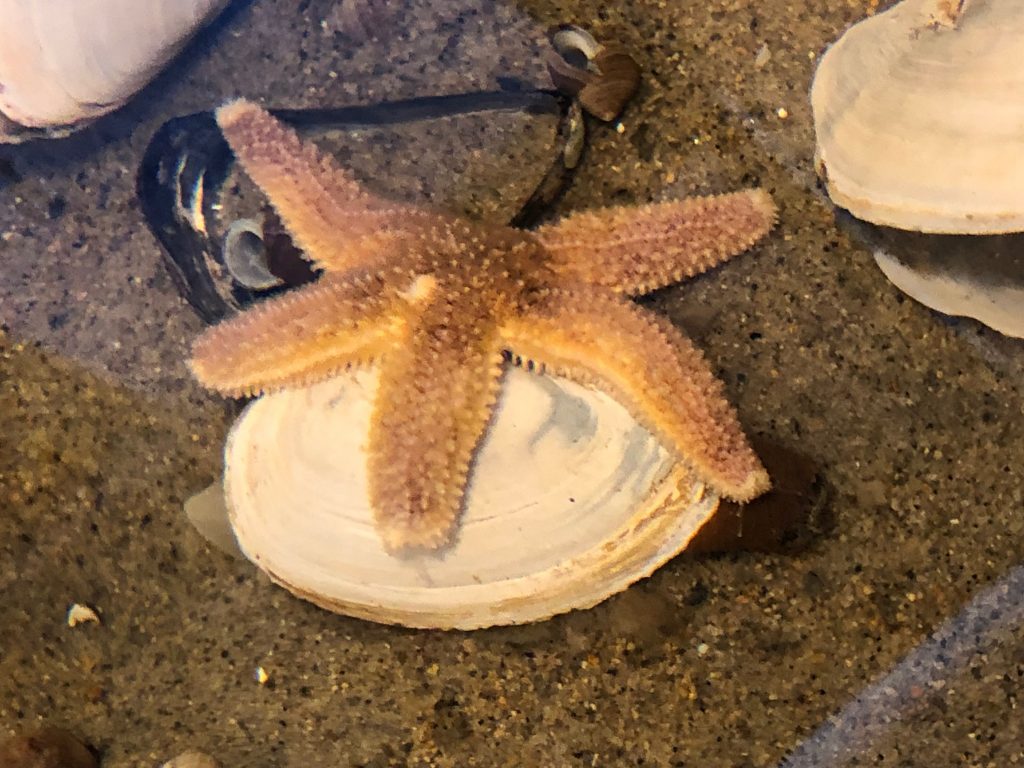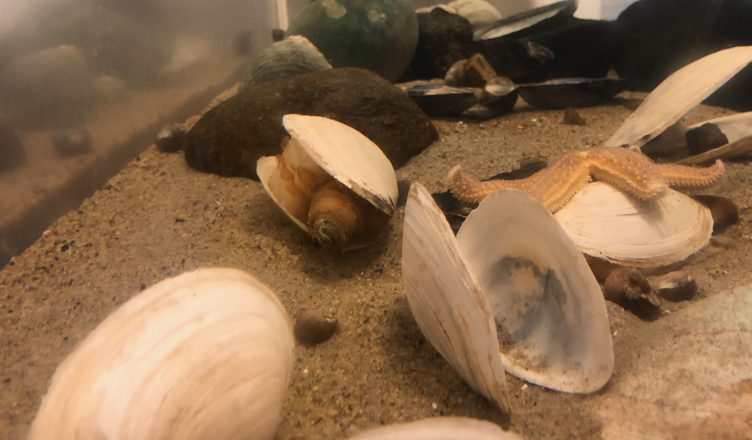This is part of our series about different animals and events at our Blue Ocean Discovery Center. This month we will discuss a Discovery Center inhabitant: the soft-shelled clam.
The soft shelled clam is a bivalve mollusk, which means that it has two shells and a soft body. The clam lives three to eight inches under the sand or mud and can be found from New England to Canada.
The clam has a long neck with two openings called siphons. One siphon is used to filter seawater for food and the other is used to expel wastes. Clams are filter feeders and remove plankton from the water. If you’ve ever walked on the beach and seen water squirting out of the sand, there is probably a clam beneath the sand.

How Old Is That Clam?
It’s easy to tell how old a clam is: just count the major growth rings on the shell. Most of the clams that we have in the Discovery Center are seven to twelve years old.

Clams have many predators. The moon snail bores a hole into the clam’s shell and eats the clam’s body. If you’ve ever found a clam shell on the beach that has a hole near the hinge part of the shell; you’ve found a clam that a moon snail attacked. Green crabs are also fierce clam predators. Thousands of square miles of clam beds in Maine have been destroyed due to the ferocious green crab. Gulls also attack clams and can be seen flying over beaches and roads and dropping clams in order to break their shells.

Humans are probably the clam’s major predator. Many of us enjoy eating them steamed, fried, and in chowder. Clams are dug commercially in many states, but not in New Hampshire. In New Hampshire, licensed residents are allowed to dig a little more than a peck of clams for personal use only. The Hampton/Seabrook estuary is a popular clamming area but it is open for digging on Saturdays only from November 1-May 31. The clam beds may be closed temporarily due to high bacteria counts, red tide or other pollutants. Only hand-held tools are allowed to be used. Be sure to check out the “digger” in the case at the Discovery Center.
Be sure to find the clams in the Blue Ocean Discovery Center!





